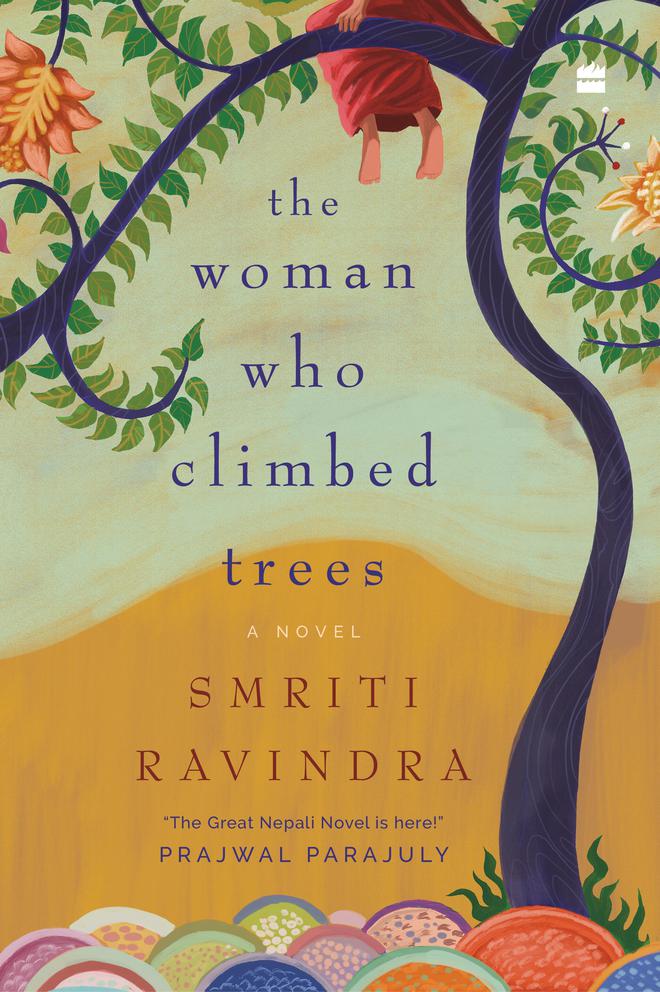The Woman Who Climbed Trees takes readers into the heart of a social world in which women exist mainly to fulfill men’s physical needs and elders are always right, one which eternally dangles the threat of shame over women and periodically inflicts violence on them. Yet, and this is among the many feats that the Mumbai-based author pulls off, the novel brings alive the emotional depth and drama of women’s lives in such a milieu. As she unfolds her gripping story, she describes household chores, physical surroundings, relationships, thoughts, and feelings in loving detail, her luminous passages filled with empathy, insight and unflinching candour.
When Meena marries Manmohan at 14, her mother tells her that “the only way to be married is to live like you have no husband.” What does she mean?
When Kaveri advises Meena to live like a widow, she is passing on an age-old secret to surviving the loneliness of marriage. For many women in the novel, the absence of a husband is more conducive to living than the presence of one. Meena, too, finds the confinement of marriage difficult to bear but impossible to break.

After marriage, Meena moves across the border from Bihar to Nepal, to a familiar cultural setting. What is foreign is her husband’s family and home, isn’t it?
Before Meena’s wedding, the barber’s wife tells her, “What is mother and motherland to a woman? They are impermanent dreams.” For Meena, marriage means a divorce from everything she knows. Whatever is familiar, like the cultural setting, becomes unfamiliar because she is an outsider struggling to carve a place within her husband’s household. Its rules, politics, economics, and allowances contrast strongly with what she has known. Like a displaced individual, Meena experiences an intense longing and nostalgia for her childhood home.
You describe how, in a society that fears and suppresses female sexuality, some women manage to find unconventional outlets for their desires. Do they pay a price?
Meena’s outlet is not that unconventional. She tries to initiate a relationship, emotional and physical, with her sister-in-law, and in the process, loses her friendship. There is no gain, only confusion, and loss. Meena’s daughter, Preeti, too feels a strong sexual pull towards her girlfriend, but finds it impossible to act upon that desire because of the rules of friendship. In a heterosexual society where women and girls are still oppressed people, a desire for same-sex love is also a desire for empathy and honest companionship. Meena says to Preeti, “Girls always love girls before they love anyone else...” Growing up in girls’ hostels, I saw love bloom between girls, intensely honest and unencumbered love, made brittle by fear and guilt.
Of the two women who rebel, one is ostracised, while the other, Meena, descends into madness. How were you able to so vividly capture her mental decline?
Initially, I didn’t want to talk about my own experience with madness, but this question has arisen in every conversation I’ve had about the book. It has even been liberating to talk about it. I come from a family of mad women. My immediate and extended family have them. This is not genetic; it is environmental. Wonderful, vivacious, colourful women made mad by the oppression of demands and lovelessness. We are stingy with our love for women and excel at crazing them.
As a Madhesi, a Nepali of Indian origin from the plains, Manmohan faces condescension from the dominant Pahadis. How does he deal with life’s pressures?
Manmohan is ambitious, so he moves to Kathmandu. He must fit in if he is to provide for his family, protect his children, and touch some of his dreams. It’s difficult for him. Like many husbands, he is a frightened man outside the home, a bully inside. Despite her displacement, Meena is fearless because she is not striving to fit in.
Why did you weave myths into the narrative?
You cannot write about Mithila, where the story is partly set, without myths. I spent much of my childhood in Darbhanga, where casual conversations are laced with stories. Festivities are celebrated with story-telling. Marriages are filled with raucous, embarrassingly sexy songs that I thought would be a crime to leave out. As for Kathmandu, how can a city of kings and temples be without stories? Every street has a quaint story behind it.
Some stories, which you describe as “baskets to carry time away in”, are potent. What were your sources?
Some, like the one about Janaka and Sita, came from popular sources like the Ramayana. Others were inspired by stories I had heard in passing, like the one about the cow letting her milk down upon a certain spot, one of the founding myths surrounding the Pashupatinath Temple. Mostly, I made them up. I enjoyed writing these the most. When I got them right, I felt so happy!
Why did you alternate between an omniscient third-person narrator and Preeti’s first-person perspective?
I didn’t start out with this plan, but sometimes I’d get stuck and not know how to say something in one or the other perspective. This eventually seemed like a viable solution. Also, I liked exploring a young voice, perhaps because, as mother to a teenage son and a high-school teacher, I spend so much time with young people.
How did you find time to write?
It was difficult. Half the time I don’t remember writing the book at all! I wrote during holidays and the one-off day of inspiration. What helped was the fact that the book had lived in me for a long time. When I did sit down to write, I could, sometimes.
The writer is a Mumbai-based independent journalist.







